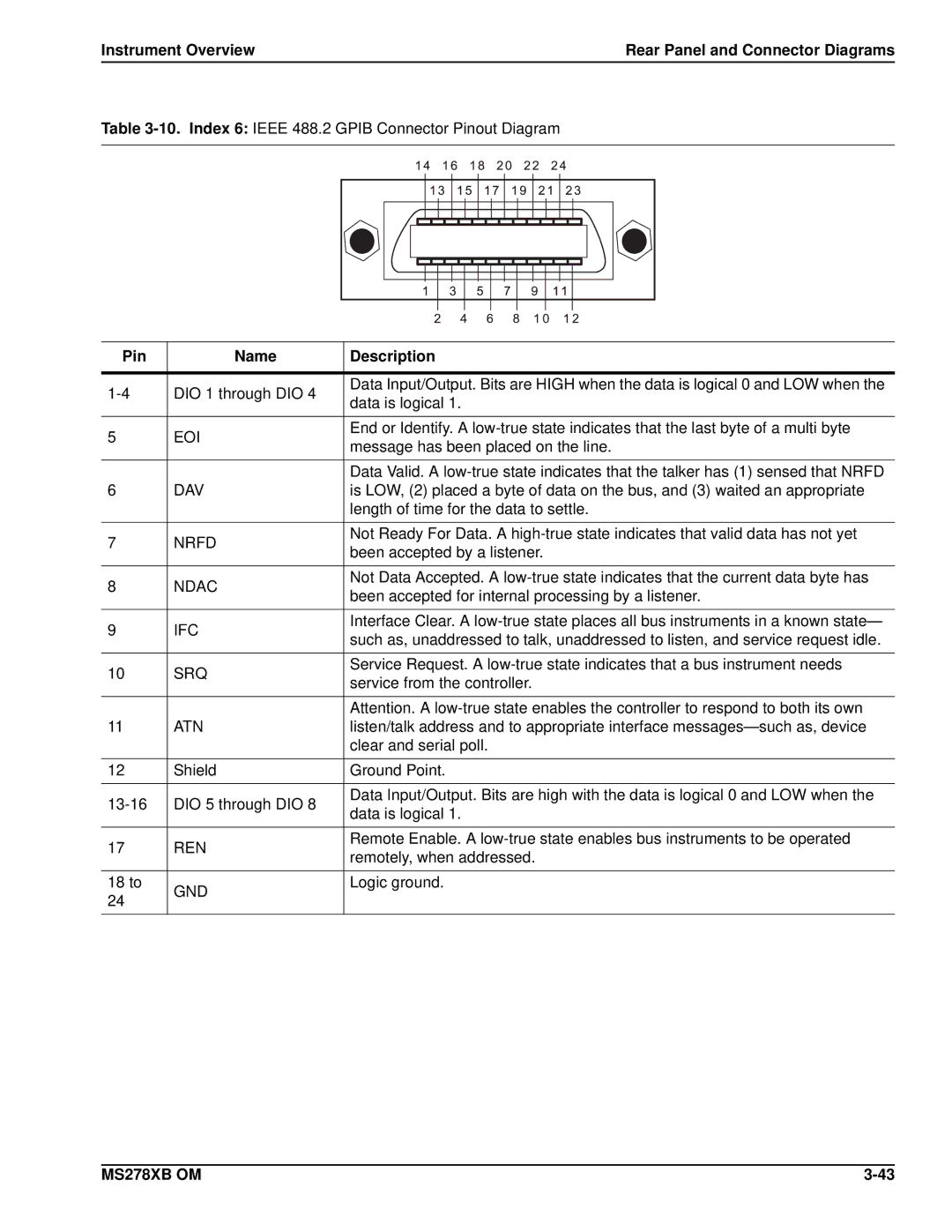
Instrument Overview | Rear Panel and Connector Diagrams |
Table
Pin | Name | Description | |
|
|
| |
DIO 1 through DIO 4 | Data Input/Output. Bits are HIGH when the data is logical 0 and LOW when the | ||
data is logical 1. | |||
|
| ||
|
|
| |
5 | EOI | End or Identify. A | |
message has been placed on the line. | |||
|
| ||
|
| Data Valid. A | |
6 | DAV | is LOW, (2) placed a byte of data on the bus, and (3) waited an appropriate | |
|
| length of time for the data to settle. | |
|
|
| |
7 | NRFD | Not Ready For Data. A | |
been accepted by a listener. | |||
|
| ||
|
|
| |
8 | NDAC | Not Data Accepted. A | |
been accepted for internal processing by a listener. | |||
|
| ||
9 | IFC | Interface Clear. A | |
such as, unaddressed to talk, unaddressed to listen, and service request idle. | |||
|
| ||
|
|
| |
10 | SRQ | Service Request. A | |
service from the controller. | |||
|
| ||
|
|
| |
|
| Attention. A | |
11 | ATN | listen/talk address and to appropriate interface | |
|
| clear and serial poll. | |
12 | Shield | Ground Point. | |
|
|
| |
DIO 5 through DIO 8 | Data Input/Output. Bits are high with the data is logical 0 and LOW when the | ||
data is logical 1. | |||
|
| ||
|
|
| |
17 | REN | Remote Enable. A | |
remotely, when addressed. | |||
|
| ||
18 to | GND | Logic ground. | |
24 |
| ||
|
| ||
|
|
|
MS278XB OM |
